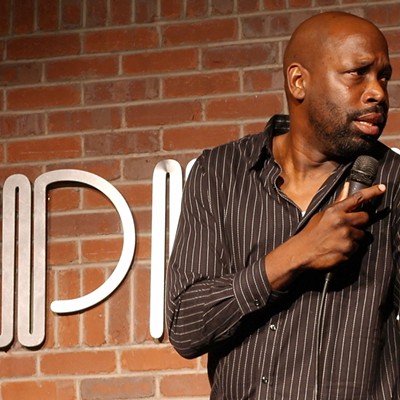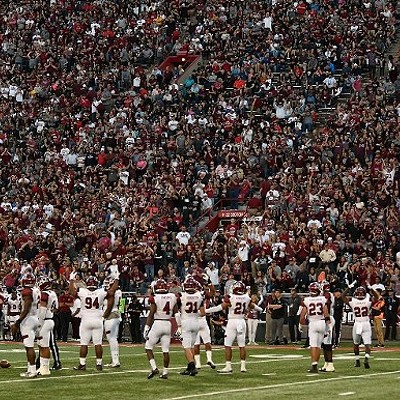Allison Cooper, vice president of marketing for the Metropolitan Tucson Convention and Visitors Bureau, is getting ready to unveil a new brand for Tucson tourism to the community on June 13. The name of the bureau will officially change to Visit Tucson with an entire new look to go with it. Check in at the bureau's website for more information and what this new brand is all about at www.visittucson.org.
How long has the new brand been in the making?
It started last year, pretty much at the start of our fiscal year on July 1. The president and CEO wanted to go out and do research on the positioning of our brand and the board embraced that.
Tell me about the process.
First a visitor inquiry study was completed followed up with a visitor analysis aggregating 165,000 hotel records from 19 hotels ... Tourism is an incredible economic driver for our region, enormously important ... $2.4 billion and 22,000 people employed. It's one of the largest industries we have. It's important for us to increase and grow our market share and doing new research on what really resonates with the visitor.
If we have a truly ownable brand ... we can grow our market share of tourism dollars. Tucson really does have many attributes. We're not an Orlando. That's not our product offering, but we resonate very well across the globe. When we did all this research we discovered how positively we resonate out there in the minds of the traveler.
In the past Tucson has been about cowboys and saguaros. Has that changed?
Interestingly what we saw both in and out of market is that saguaros are iconic. They are basically our landmark. I've worked in Tucson for 15 years and I personally never get tired of it. ... In our research they are very iconic for us because when you look at the rest of the world you only find them in our area of the country (and northern Mexico).
Cowboys?
Our cultural heritage remains very important, so cowboys do resonate, but there are also great opportunities for us that we can own other areas certainly as an outdoor mecca. Outdoor recreation is a $674 million industry. ... We are already recognized for being a cycling destination and are a cycling mecca. But our culture is still so hugely distinct for us—rooted deeply in Spanish, Mexican, Western, Native American.
What else came out as important?
Politics. We are looked at as a progressive, friendly and welcoming community. The issues we've had, the negative PR on immigration, has not touched us the way it's touched Maricopa County. We also have immense assets upon which to draw travelers to deliver a real authentic experience—our natural environment and spectacular scenery. What we have here you can't experience anywhere else. ... We have so many destination drivers. We are one of the top astronomy and star gazing regions in the world. The Arizona-Sonora Desert Museum—we know that 12 percent of our visitors come here just to go to see that attraction.
Tell me about MMGY Global's involvement with the project.We followed disciplined process when we decided to do the research and do the rebranding. An RFP was issued in the fall of 2012 that was released nationally, locally and regionally to do in depth research. At end of the day it's about the research. Anyone can create a campaign, but you need research. We had 16 agencies, local, statewide and national who submitted proposals. We had a selection committee who followed a rigorous and strict process. Four agencies gave four presentations. MMGY was unanimously selected. ... We began the research in January. ... For an entire week in January we held about 100 stakeholder interviews and four town hall forums with local community, business partners, elected officials, funders with city, county and towns who shared what they believe Tucson's top attributes are. And we did local survey that's still on visitingtucson.org so the community at large could participate as well. We also did focus groups in Chicago and Denver, where a high number of our cold-weather visitors come from.
How much did the new branding effort cost and where does that funding come from?
We are funded through the bed tax, a percentage from city and the county, then have an agreement with town of Oro Valley and separate agreement with both tribal governments ... and we are also a member based organization with 500 or so partners who pay dues. The cost for the re-branding project was $175,000 which came out of the current fiscal year budget.






